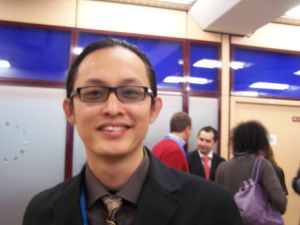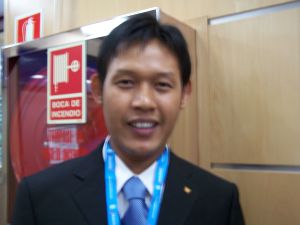How do you imagine future’s urban lifestyle?
– Orange is asking participants of the Madrid conference.

…The important thing is the identity. That creates the unique atmosphere and energy in cities. We need to work on connecting culture with the architecture and infrastructure of the city much more.
Low Kok Chang, sewo engineur, peace activist

…People are moving to cities now and plus, there is a lot of tourists everywhere. When you go to Madrid, you’d like to see and experience something Spanish, when you go to Paris , you’d like to see something French and so on. But everything’s becoming global, cities loose their identity. There’s no emotion. We have to work more on the ethnic diversity. Actually, this is what I do in Estonia.
Katri Ristal, director of marketing at Estonian Open Air Museum
 …Public transport is developed in Tokyo very well. I wish it could expand to other countries, in Europe and America, in the future. Advanced public transport makes the city more accessible, more friendly for inhabitants. But there’s something I miss in Japan that Europe and United States Have: cultural diversity. I miss all that energy which people from different countries bring. Japan is still very hesitant about it. I hope it’ll change someday.
…Public transport is developed in Tokyo very well. I wish it could expand to other countries, in Europe and America, in the future. Advanced public transport makes the city more accessible, more friendly for inhabitants. But there’s something I miss in Japan that Europe and United States Have: cultural diversity. I miss all that energy which people from different countries bring. Japan is still very hesitant about it. I hope it’ll change someday.
Yui Hirohashi, participant of the conference

…Urbanization seems to have negative effects in my country. It’s very difficult to live in a city in Myanmar because of accomodation. Furthermore, it causes huge damage of green environment. City’s a jungle, but a concrete jungle, like Bangkok.
This year, 50% of trees died in Yangon, the capital of Myanmar, because of hot summer. They weren’t looked after properly. We need a good plan how to take care of trees and plants in the city.
Bo Bo Lwin, coordinator of Youth Programme in Myanmar

…The most developed cities in Europe for ex. in UK or France are post-urbanized. I doubt if they change in the future. It’s the same in Asia. They may develop infrastructre
and public transport more and definitely more people will live in the city.
Piotr Wiackiewicz, Project Manager at Fundacja Projekt-Lodz in Poland

…My greatest hope is to be able to create sustainable, safe, peaceful and quiet cities. It’s
important to keep the identity as well but the integrated, multicultural space is one of the goals as well.
Nuria Fron, International Advisor for Madrid Global

…My philosophy is to summarize the best the idea of bringing things together. To create a common space of living, working and leisure, to the reasonable extend, of course. The huge advantage of such solution is less pollution because people wouldn’t drive so much around the city as today: from home to work, to restaurants or bars.
Moreover, it would become more attractive for older people. They are less mobile, they have special needs. It will be more comfortable for them to live in the city, if we keep things together. They wiil have chance to use everything the cultural life has to offer. It would make urban life more attractive for them and they will stay in the city instead of moving out or come back.
The next thing about improved urban life in the future is people with different backgroud, for example older and younger people, living together. It has many profits. Schoolchildren could help the older people with shopping while older ones could help younsters with their schoolwork.
Stephan Korte, attorney and a local party leader of FDP (Freie Demokratische Partei) in Frankfurt

